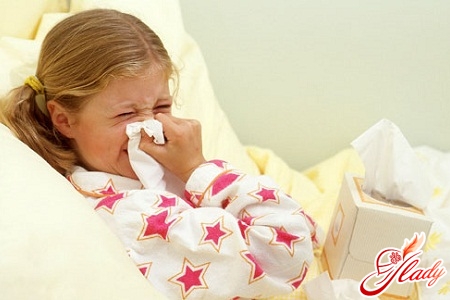
The causative agent of thrush, the reason for its appearance,is the Candida fungus. Microorganisms are initially part of the microflora of the oral cavity, colon and vagina of healthy women, but the proliferation of fungi in large quantities leads to unpleasant consequences. Deterioration of the immune system only aggravates the situation. Signs of thrush in women are manifested in many aspects, so it is necessary to approach the solution of the problem seriously.
Main symptoms
One of the symptoms of thrush isitching in the perineum. It can be present constantly or intensify a week before menstruation, during long walks, using sanitary pads or wearing underwear made of synthetic materials. Itching and accompanying unpleasant sensations often occur after taking hot baths or at night. The symptoms are especially pronounced in women prone to allergies. These are the first symptoms of infection, and it is necessary to take some action immediately. Unpleasant sensations and itching often force women to scratch the affected area, which leads to the spread of infection, resulting in inflammation of the external genitalia, their redness and swelling. With thrush, the vaginal mucosa is very sensitive, which can create problems when urinating or taking a shower or bath. An important sign indicating the occurrence of an infection is discharge from the genitals. The glands of the vagina provoke abundant transparent discharge, which is normal. When the disease occurs, the discharge becomes whitish and quite viscous, which is why the disease got its name. Unpleasant sensations can also appear during intimate relations, which occurs due to swelling and inflammation of the vulva and vagina. Painful sensations can lead to the emergence of fear in a woman before sexual intercourse, which jeopardizes normal family relationships.
Classification and causes of thrush
Thrush is differentiated depending on the primary site of infection:
The main focus of the disease also has a different character, therefore, depending on its distribution, the following are distinguished:
The causes of thrush in women are veryare varied. The main causes of the disease include such a factor as long-term treatment with antibiotics. There is a well-founded opinion that it is this factor that leads to disruption of the vaginal microflora, thereby increasing the risk of vaginal candidiasis. Hormonal changes in the body due to pregnancy or breastfeeding are also one of the causes of thrush. As statistics suggest, it is pregnant or lactating women, due to reduced immunity, who are susceptible to the manifestation of all the main signs of the disease, such as, for example, curdy white discharge. The causes of thrush include both decreased immunity and endocrine diseases that make the body vulnerable and susceptible to infections. The absence of lactobacilli in the vaginal microflora and, as a result, dysbacteriosis put local immunity at risk. The cause of thrush is also unprotected sexual intercourse, since the risk of women acquiring an infection due to sexual contact with an infected man is very high, about 80%.
Urogenital Candidiasis
Medicine distinguishes three forms of thrush:infection carriage, chronic thrush and urogenital candidiasis. If a woman's body is a carrier of the fungus, she has no complaints. However, the disease can be easily detected with a smear. The situation is aggravated during pregnancy, since a woman carrier, even in the absence of visible signs, can infect her baby during childbirth. The acute form of the disease has such signs as redness, itching, swelling and rashes on the skin and mucous membranes of the vagina. With prolonged manifestation of the above signs and the absence of treatment, as a rule, more than two months, we can talk about the transition of the disease to the chronic stage. Urogenital candidiasis has such symptoms as the appearance of an unpleasant odor with further development of the disease, cheesy discharge, which can be profuse or moderate, burning and itching that occur at night, especially after taking a hot bath or sexual intercourse. During the disease, it is better to refrain from sexual intercourse in order to protect your partner from the disease. In the most advanced forms, sexual intercourse is impossible. Therefore, it is extremely important to focus on the treatment of thrush.
Treatment and prevention
If symptoms of the disease appear, you should undergoexamination by a gynecologist. For diagnostics, a smear is taken from the mucous membranes of the vagina and rectum, cervical canal and urethra. Before visiting a doctor, it is necessary to refrain from hygiene procedures, including the use of antiseptics. The main treatment for the disease in women is considered to be antifungal agents that affect the type of fungus that a woman is sick with, which can be identified during diagnostics. For effective treatment, drugs should be used both locally and systemically. Drugs for local use are ointments, creams, vaginal tablets and suppositories. Systemic drugs include tablets and capsules taken orally during treatment. The main drugs used in the treatment of thrush include diflucan, or fluconazole, and pimafucin. They are used either in one dose or prescribed for a period of three days. In case of severe damage, the treatment period may be extended, depending on the patient's condition. Suppositories are rarely prescribed, as many women may develop dysbacteriosis as a result of treatment with them. To prevent the disease, certain conditions should be observed:
It is not recommended to try it yourself.diagnose the disease, and even more so try to treat it yourself. If the first symptoms appear, you should immediately seek help from qualified specialists, and not rely on the advice of your best friends and advertised drugs. An important aspect of preventing thrush is nutrition, which should be complete. You should know which foods are necessary and which should be excluded from the diet. These include excess simple carbohydrates, foods containing artificial substitutes, preservatives and dyes. It is important to completely give up bad habits such as smoking, limit yourself in alcohol consumption, and it is advisable to completely give up alcoholic beverages.









